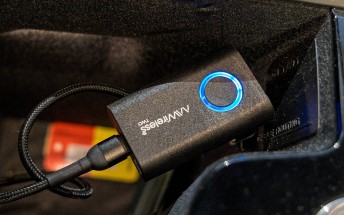OnePlus Watch 2 hands-on review
After a hat trick of failures, OnePlus is back with its newest entrant in the wearable space. The OnePlus Watch 2 is by far the most sophisticated wearable device the company has come up with yet which, at least on paper, should make it more resistant to the fate that befell its predecessors.

The Watch 2 is a full-bore smartwatch running Google's Android-based Wear OS. But the real trick up its sleeve is that it runs a second, secret OS, complete with its own chipset, which is meant to handle low-level tasks and prolong the battery life. But more on that later. First, let's look at the design.
Design
The OnePlus Watch 2 has received a significant overhaul in how it looks and feels on your wrist. Gone are some of the rounded edges in favor of flat sides, straight lines, and hardened edges. It's a bulkier design that feels more purposeful and less generic than its plain-faced predecessor. The side buttons sit on a prominent shoulder that juts out the side of the casing. Whether or not it was intentional, this is a much more masculine design you would normally find on a men's watch and may not have the unisex appeal of its predecessor.

The Watch 2 comes in two colors, the Black Steel pictured here as well as a lighter Radiant Steel. Both are made out of stainless steel and feature a brushed metal finish with some glossy, polished surfaces.
Complementing the sturdy steel case is a 2.5D sapphire crystal glass, which has a gentle curvature around the edges but is otherwise flat.
Getting back to the side switches, there are two of them. The one on the top looks like a crown and even spins like a crown but it's just a button that you press down. The same goes for the button below, which has a flat surface. Both buttons click with a satisfying feel with some resistance to avoid accidental presses.

The Watch 2 comes in a choice of two straps. Both feature a fluoro rubber strap with a striated pattern and stainless steel buckles. The one featured here is black and there's also a seafoam green that ships with the Radiant Steel variant. The straps attach using a standard latch mechanism to the lugs, which can accept a variety of existing straps.

As for the overall look and feel, the Watch 2 does look better than the original Watch, but that's debatable. What isn't debatable are the increased dimensions and weight and while it's certainly not unmanageable, you can definitely feel its presence on your wrist. It's particularly bothersome if you like to wear your watch to bed for sleep tracking and you constantly feel this lump on your hand as you move it around. OnePlus should rethink its one-size-fits-all approach to watch design if it wants to appeal to a broader audience.
Display
Moving on, the Watch 2 has a 1.43-inch, 466x466 resolution, AMOLED display. The panel refreshes at a constant 60Hz and has a claimed high brightness mode of 1000 nits. The display has vibrant and slightly oversaturated colors, inky blacks, and good viewing angles that make it easy to see at a glance.

The display doesn't get as bright as I'd like under intense sunlight, which can make certain watch faces and complications hard to see. The auto brightness works well indoors but doesn't make the display brighter than what you can do manually under extreme outdoor lighting. Still, a lot of the brighter watch faces remain readable as do the high-contrast menus.
Software, features and performance
The software is the star of the show on the OnePlus Watch 2. Like some previous Oppo watches, the Watch 2 runs on a combination of Wear OS, which runs on the Snapdragon W5 chipset, and an RTOS, which runs on the BES 2700. The combination of RTOS and 2700 is running most of the show in the background, including low-level activities and things like connectivity, sleep and heart rate tracking, and fitness tracking. Then, when the user interacts with Wear OS-specific features and applications, the OS fires up the W5 chipset.

The advantage of this hybrid approach is obvious; the Watch 2 can save a lot of power by keeping the W5 idle and running low-level activities on the low-power 2700 chipset while reserving the W5 chip only for things like running apps and third-party watch faces. That's the default behavior for the watch under the Smart mode. OnePlus claims 48-100 hours of battery life in this mode.
There is also a Power Saver mode, which disables all Wear OS functionality and runs exclusively in RTOS mode. In this mode, all apps, third-party watch faces, and some communication features are disabled but you can still access all your fitness and tracking features. The upside to this mode? A claimed 12-day battery life.
You can easily toggle between these modes through settings or drop-down toggles. It's pretty quick to switch from Smart to Power Saver mode but going back requires the watch to restart and boot into Wear OS, which takes a while.
This is essentially the best of both worlds. While we all desire full smartwatch functionality (and that was the main complaint lobbed against the original OnePlus Watch, which wasn't a smartwatch), most people don't need to use third-party apps daily, especially considering Wear OS doesn't exactly have a massive library, to begin with. So for those users, and ones who don't care at all about third-party apps, the Power Saver mode is a clever inclusion. And should you change your mind, a full smartwatch experience lies on the other side of a reboot.

Aside from that, the software experience on the Watch 2 is pretty similar to other Wear OS devices. It's easy to navigate and everything is where you'd expect it to be. Gestures also work well although it would have been nice if the button that looks and twirls like a crown also allowed you to scroll through the UI instead of having to use the touchscreen every time.
Performance on the Watch 2 is decent but unexceptional. Usually, the UI moves smoothly but there are occasional hitches and slowdowns when navigating the Wear OS menus and third-party apps and watch faces. The watch then slows down considerably when switched into Power Saving mode and using just the BES 2700 chip. It's never unusable but the difference is quite noticeable.
On the phone side, the Watch 2 is only compatible with Android smartphones, which is an unfortunate shortcoming it shares with its predecessor. You need to install the new OHealth app rather than the previous OnePlus Health app. This is the same app that is used by Oppo wearables.
The OHealth app is perfectly functional, with all the health monitoring features, dozens upon dozens of watch faces, and the ability to change notification settings for the watch. Conveniently for us, it also lets you take screenshots from the watch from within the app, which are then saved on the phone. The app also functions without signing in but you can sign in to sync your data across devices.
The app comes with a whole bunch of watch faces; I counted 87 in the current build. A lot of them are customizable, and you can change things like colors, fonts, and complications. Of course, being a Wear OS device means you can also download more from the Play Store. I tried the popular 'Facer' app and it worked fine.
Similarly, the watch also tracks a bunch of activities, including walking, running, cycling, swimming, jumping, hiking, and skiing, as well as popular sports like tennis and badminton. Most of the ones I tried work well enough although I can't yet vouch for their accuracy.
The watch also has your usual range of sensors, including ones for heart rate and blood oxygen, and can track your sleep and stress levels. For most people, that should be fine but if you are looking for things like EKG and blood pressure monitoring then you are not going to find it in this price range.
But while that's understandable, a rather bizarre omission is cycle tracking for women, which was also missing on the original OnePlus Watch three years ago. This is a basic feature that most other wearable manufacturers offer these days and doesn't require too much effort to implement but OnePlus simply cannot be bothered to. I even tried swapping sex in the OHealth app from Male to Female to see if it would show up but it didn't. Perhaps it's time to hire a few more female employees if this is the state of your health and fitness product development in 2024. Hopefully, this gets added via a software update.
Connectivity
On the connectivity front, the Watch 2 supports Bluetooth, Wi-Fi, NFC, and GPS. The GPS on the Watch 2 was reliable unlike on the original OnePlus Watch where it would often take several minutes to establish connection. The NFC functionality could not be tested, however, as the Google Pay function isn't available in countries like India.
The watch has 32GB of internal storage, of which about 23GB was available for use. This should allow you to have a bunch of audio content at reasonable quality downloaded on the watch and you can then pair your wireless earbuds directly to the watch to listen. Unfortunately, there is no cellular connectivity option, so you are reliant on Bluetooth and Wi-Fi for all data.
Battery and charging
The Watch 2 features a sizable 500mAh battery, which OnePlus claims provides up to 100 hours in Smart mode and 12 days in Power Saving mode. In the time I had with the device, I only managed to drain the battery once after about four days of use in the Smart mode. Having said that, I don't wear my watch all day and I certainly don't wear it to sleep outside of testing sleep tracking.

Still, the combination of the hybrid chipset and OS, not to mention the large battery means the Watch 2 easily runs a day or two longer than most smartwatches on the market, and even heavy users can expect 2-3 days on a single charge.

The watch charges through a magnetic puck that attaches to the back of the device and then uses pogo pins to transfer power. The puck is pretty small and uses a USB-C port to let you plug in your own cable. But since it essentially weighs nothing, removing the watch causes the puck to be yanked back by the weight of the cable. Also, the design of the default straps means you can't have the watch on its back while charging, so the cable just sticks out awkwardly.
Conclusion
Alright, time to wrap this one up for now. Aside from minor niggles here and there, there weren't any standout issues with the OnePlus Watch 2 during my testing. It's a good-looking watch with a good-quality display, a clever hybrid software design, and good battery life. It's a huge leap forward from its predecessor, which was neither here nor there.

This huge leap does come at a price. At $299.99 / £299 / €329 / ₹24,999, the Watch 2 is over twice as expensive as its overpriced predecessor. However, considering the functionality on offer here, it is reasonable, especially when you consider competition like the Pixel Watch 2, which is much more expensive despite having fewer features. And while the Galaxy Watch6 has more features, it also costs more.
In the end, the OnePlus Watch 2 finds itself in a niche of its own with a fairly complete feature set and a more attractive price than its competitors.
Related
Reader comments
- Mehrec
- 02 Mar 2024
- 0GL
ECG and blood pressure are difficult to write in this price December, but there is a Samsung watch 6...
- Revelation1
- 28 Feb 2024
- YY8
I think you're correct on this. I do not need a watch, but I like the idea behind smartwatches and I think this Oneplus design suits my taste. I got a coupon from Oneplus to drop the price but even at $250 US, that's more than I would spe...
- Anonymous
- 27 Feb 2024
- dSV
yes its work with GooglePlay























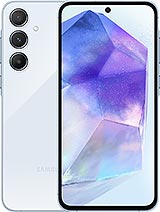 Samsung
Samsung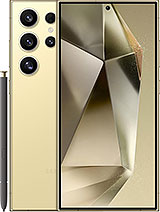 Samsung
Samsung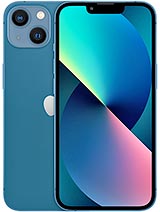 Apple
Apple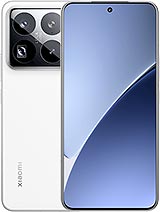 Xiaomi
Xiaomi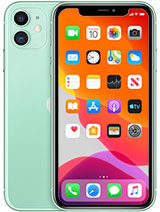 Apple
Apple

